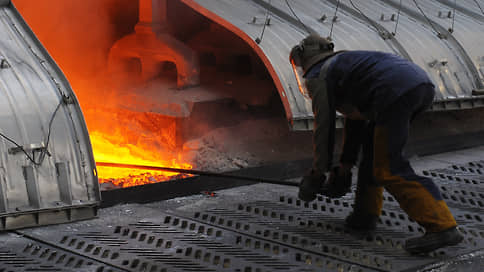China is invited to Novaya Zemlya
[ad_1]

Chinese investors may be involved in designing a factory for the Pavlovsk lead-zinc deposit on Novaya Zemlya. Rosatom, left without European partners and foreign funding due to sanctions, is negotiating the implementation of the project with the Chinese NFC and Powerite. The companies will work on the project from scratch and will also engage in reorientation of metal exports to Asia. Analysts consider such a partnership logical, since China is now a leader in technologies for the extraction of precious and rare earth metals. Chinese shipyards also have large capacity to build floating factories, which may have to be used on the archipelago.
JSC First Mining Company (part of Atomredmedzoloto, ARMZ – the mining division of Rosatom) signed memorandums with the Chinese NFC and Powerite Limited “to determine the general conditions and intentions for further implementation” of the development of the Pavlovsk lead-zinc deposit on the Novaya Zemlya archipelago , as well as the construction of a pilot Arctic mineral resource center. The document was signed on March 25 on the sidelines of the international forum Atomexpo 2024. ARMZ declined to comment.
Alexey Likhachev, head of Rosatom, March 31, 2017:
“We are thinking of exporting lead and lead concentrate.”
NFC Corporation acts as an international contractor in non-ferrous metals mining projects. The company has extensive experience in cooperation with Kazakhstan, in which NFC has invested $90 million in mining projects in the republic in recent years, judging by its website. At the same time, Kazakh media reported that NFC is participating in the construction of a copper plant for the Baimsky project of Kaz Minerals in Russia.
ARMZ started thinking about developing the lead-zinc deposit on Novaya Zemlya back in 2012, but the work was delayed. In 2021, ARMZ reported that it had completed the JORC mineral resource assessment. They were estimated at 55 million tons of ore with an average equivalent zinc content of 4%.
At the same time, the total resources of zinc were estimated at 2 million tons, lead – 430 thousand tons, silver – 30.3 million ounces, respectively. The planned launch was expected in 2026.
A consortium of Finnish companies developed a preliminary design for a floating concentrator for the field, the construction cost of which was estimated at $133 million in December 2021. The project had agreements on project financing from a syndicate of European banks for $250 million, as well as the conclusion of a 15-year off-take contract for $5 billion with the Swedish Boliden. But in 2022, European companies, including equipment supplier Metso Outotec, refused to cooperate on the project due to sanctions restrictions.
As a result, the floating factory project had to be abandoned, Natalya Potapova, a representative of the First Mining Company, said in 2023. Representatives of ARMZ then stated that the option with a floating factory existed only in the form of one of the sketches. In 2022, Glavgosexpertiza, according to ARMZ, issued a positive conclusion on the design documentation of the onshore mining and processing plant and the port complex under the VNIPIpromtekhnologii project (part of ARMZ).
Working on a project with Chinese companies is a logical step, says Mikhail Burmistrov, head of the Infoline-Analytics company. China is now the world leader in terms of its competence in developing deposits of non-ferrous and rare earth metals. In addition, the demand for these products may also be partially oriented towards China. At the same time, analysts interviewed by Kommersant believe that Rosatom and its Chinese partners will most likely have to return to the idea of a floating factory, since it is more environmentally friendly and economically feasible for construction in the Arctic zone with an extremely short period of construction work, the presence of problems in the form of permafrost, as well as logistical restrictions. In addition, China has large factory capacities where modules for a floating factory can be built.
[ad_2]
Source link





